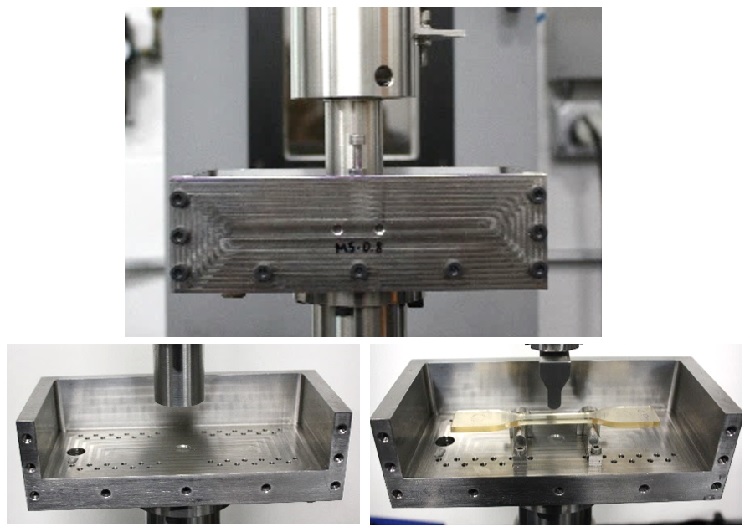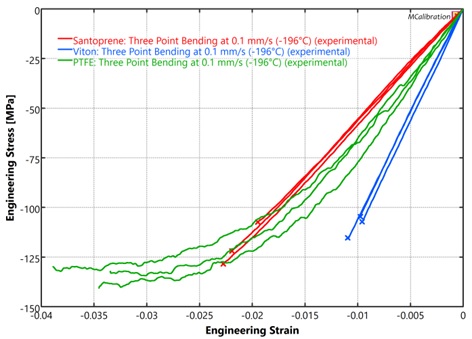Technical Challenge
Many polymers are used in engineering applications that experience cryogenic temperatures below -150°C, such as superconductors or cryopreservation systems. The material properties of these polymers can drastically change as temperatures drop.
Engineers need to understand the behavior of their materials at these extreme low temperatures to assess their performance properly. However, standard environmental chambers used to test materials typically have a more limited range, going only as low as -100°C.
Veryst Solution
Veryst developed a custom fixture to test materials submerged in liquid nitrogen (LN2), which allows us to test at liquid nitrogen’s boiling temperature of -196°C. The fixture, shown in Figure 1, attaches to a standard universal test frame and can be modified to perform three-point bending and compression tests using standard sample sizes. The fixture includes attachment points to connect an extensometer to measure displacement accurately close to the sample.
Veryst begins each test by pouring liquid nitrogen into the empty fixture until the fixture itself reaches a stable cryogenic temperature, at which point the liquid nitrogen slows its evaporation rate. We position the test sample inside the fixture and allow the material’s temperature to equilibrate in liquid nitrogen. We then test the sample, keeping it fully submerged in liquid nitrogen for the duration of the test.
Veryst tested three materials in our custom three-point bending fixture: Santoprene (a TPV, or thermoplastic vulcanizate), Viton (a fluorocarbon elastomer), and PTFE (polytetrafluoroethylene). We ran the three-point bending tests with a support span of 40 mm and displacement rate of 0.1 mm/s. The results are shown in Figure 2.
Santoprene, an elastomer at room temperature, has a high bending stiffness and fails quickly. Viton, although known for its temperature resistance, has the highest bending stiffness of the three materials and the lowest failure strain. The PTFE samples surpass the failure strain performance of both elastomers and do not reach failure by the end of each test.
This data can be used to select and calibrate a material model (link to material modeling page) for use in commercial FE packages for engineers to virtually test their design prior to manufacturing, as well as understand in-service failures.

